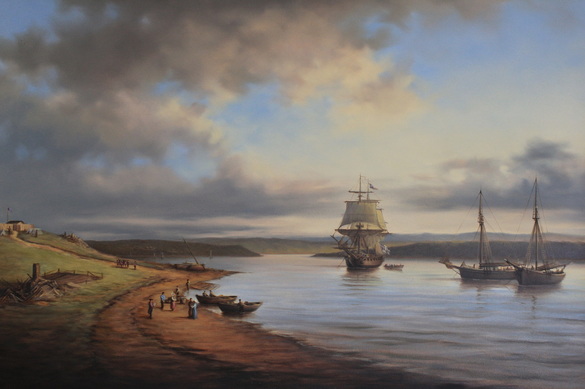Locally Found Artifacts

The Avon peninsula is known for its Acadian cellars. Prior to 1755 many Acadian homes dotted the area. During the expulsion the majority of these homes were burned to the ground, with nothing but the stone cellars remaining.
When the New England Planters arrived in 1760 only a small number of Acadian homes remained. After seven seasons had passed a lottery was held and the homes were finally divided amongst the new residents, who had until this point been cooped up within the palisades of the fort.
Occasionally remnants of this time resurface in plowed fields; such an example is the George Stevenson collection, on display here at the museum, which was unearthed in Poplar Grove.
When the New England Planters arrived in 1760 only a small number of Acadian homes remained. After seven seasons had passed a lottery was held and the homes were finally divided amongst the new residents, who had until this point been cooped up within the palisades of the fort.
Occasionally remnants of this time resurface in plowed fields; such an example is the George Stevenson collection, on display here at the museum, which was unearthed in Poplar Grove.
Artéfacts
La péninsule d’Avon est connue pour ses caves Acadiens. Avant 1755 plusieurs maisons Acadiens ont parsemé la région. Pendant l’expulsion la majorité de ces maisons étaient réduit en cendres, avec aucun sauf les caves en pierre restant.
Quand les Planters de la Nouvelle-Angleterre sont arrivés en 1760 seulement un petit nombre de maisons Acadiens étaient là. Après sept saisons avaient passé une loterie s’est passé et les maisons étaient finalement divisé entre les nouvelles résidents, qui a ce point étaient confiné dedans les palissades du fort.
Occasionnellement les restes de ce temps refaisaient surface dans les champs labourés; par exemple la collection de George Stevenson, en exposition ici à la mussée, qui était déterré en Poplar Grove.
Quand les Planters de la Nouvelle-Angleterre sont arrivés en 1760 seulement un petit nombre de maisons Acadiens étaient là. Après sept saisons avaient passé une loterie s’est passé et les maisons étaient finalement divisé entre les nouvelles résidents, qui a ce point étaient confiné dedans les palissades du fort.
Occasionnellement les restes de ce temps refaisaient surface dans les champs labourés; par exemple la collection de George Stevenson, en exposition ici à la mussée, qui était déterré en Poplar Grove.